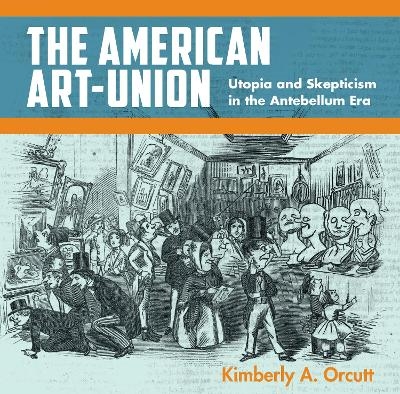
The American Art-Union
Fordham University Press (Verlag)
978-1-5315-0699-5 (ISBN)
For over a decade, the New York–based American Art-Union shaped art creation, display, and patronage nationwide. Boasting as many as 19,000 members from almost every state, its meteoric rise and its sudden and spectacular collapse still raise a crucial question: Why did such a successful and influential institution fail? The American Art-Union reveals a sprawling and fascinating account of the country’s first nationwide artistic phenomenon, creating a shared experience of visual culture, art news and criticism, and a direct experience with original works.
For an annual fee of five dollars, members of the American Art-Union received an engraving after a painting by a notable US artist and the annual publication Transactions (1839–49) and later the monthly Bulletin (1848–53). Most importantly, members’ names were entered in a drawing for hundreds of original paintings and sculptures by most of the era’s best-known artists. Those artworks were displayed in its immensely popular Free Gallery. Unfortunately, the experiment was short-lived. Opposition grew, and a cascade of events led to an 1852 court case that proved to be the Art-Union’s downfall. Illuminating the workings of the American art market, this study fills a gaping lacuna in the history of nineteenth-century US art. Kimberly A. Orcutt draws from the American Art-Union’s records as well as in-depth contextual research to track the organization’s decisive impact that set the direction of the country’s paintings, sculpture, and engravings for well over a decade.
Forged in cultural crosscurrents of utopianism and skepticism, the American Art-Union’s demise can be traced to its nature as an attempt to create and control the complex system that the early nineteenth-century art world represented. This study breaks the organization’s activities into their major components to offer a structural rather than chronological narrative that follows mounting tensions to their inevitable end. The institution was undone not by dramatic outward events or the character of its leadership but by the character of its utopianist plan.
Kimberly A. Orcutt is Executive Editor of Nineteenth-Century Art Worldwide. She has served as curator of American art at the Brooklyn Museum, the New-York Historical Society, and Harvard Art Museums. She is the author of Power and Posterity: American Art at Philadelphia’s 1876 Centennial Exhibition.
Introduction: The Dream of Art for the People | 1
1 Engravings: To Lead Taste or to Follow? | 29
2 Selecting Artworks for Distribution: From Democracy to Oligarchy | 63
3 The Free Gallery: Art, Anxiety, and Revolution | 99
4 Distributions and Membership: “Messengers and Missionaries of Art”? | 122
5 The Bulletin: From Education to Provocation | 155
6 Slowly, Then All at Once: The Demise of the American Art-Union | 180
Acknowledgments | 209
Appendix A: American Art-Union Resources | 211
Appendix B: American Art-Union Officers and Committee of Management, 1839–51 | 213
Appendix C: American Art-Union Engravings Distributed to All Members | 216
Notes | 219
Sources Cited | 253
Index | 271
| Erscheinungsdatum | 03.09.2024 |
|---|---|
| Zusatzinfo | 87 color illustrations |
| Verlagsort | New York |
| Sprache | englisch |
| Maße | 229 x 229 mm |
| Themenwelt | Literatur ► Essays / Feuilleton |
| Kunst / Musik / Theater ► Kunstgeschichte / Kunststile | |
| Sachbuch/Ratgeber ► Geschichte / Politik ► Regional- / Landesgeschichte | |
| Geisteswissenschaften ► Geschichte ► Regional- / Ländergeschichte | |
| Sozialwissenschaften ► Kommunikation / Medien ► Journalistik | |
| Wirtschaft | |
| ISBN-10 | 1-5315-0699-2 / 1531506992 |
| ISBN-13 | 978-1-5315-0699-5 / 9781531506995 |
| Zustand | Neuware |
| Informationen gemäß Produktsicherheitsverordnung (GPSR) | |
| Haben Sie eine Frage zum Produkt? |
aus dem Bereich


